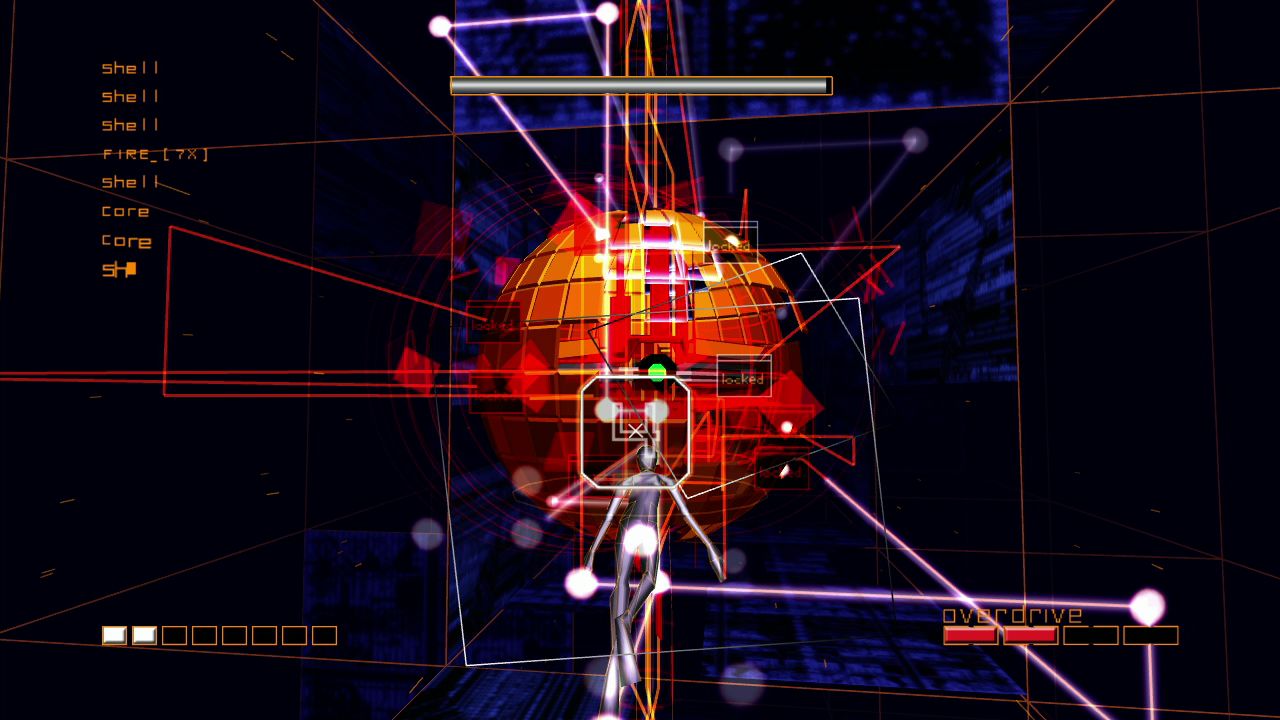In a way, Rez is a true successor to Tetris. Like the seminal Soviet puzzler, Rez consists of completely abstract graphics. In Tetris, you control arbitrary colorful blocks falling in an arbitrary pit. In Rez, you control an arbitrary cyber-person shooting arbitrary colorful flying objects. Both games have marginal stories imposed onto them, but plot doesn't matter at all in either game.
And much like Tetris, enjoyment of Rez depends largely on rhythm. Now I know what you're about to say: "But Jake, Tetris isn't a rhythm game!"
Oh, but it is. Tetris is the consummate casual game: you can play it for two minutes, or you can play it for two hours. The reason we're able to fall into a Tetris trance for so long is the rhythm. The Russian soundtrack is classic, but even without the music, players get into a certain groove clearing line after line of blocks.
Rez is the same thing on drugs. The rail shooting isn't an exciting game mechanic, and the enemies are repetitive. But players get into the same groove playing this game that they do playing Tetris.
Mizuguchi takes the rhythmic play to the next level. Rez's levels have psychedelic visuals and a pumping trance music soundtrack. Perhaps the most notable aspect of this rhythm, though, is the vibratin'.
Whether it's the force feedback of shooting a gun in Call of Duty or the pang of hitting the post in FIFA, tactile feedback through the vibration feature of modern game controllers is something players often overlook, but when used correctly, adds to the game experience.
Rez utilizes vibration perhaps more than any game before or since. A subtle buzz accompanies the beat of the game's music, along with the rumble of shots fired. But it doesn't end there. In Rez, players can activate multiple controllers for the sole purpose of "trance vibration"--each controller vibrates for different purposes. It's a genius concept, and more than a little suggestive.
I'd love to see games in the future vibrate the same way Rez does.


No comments:
Post a Comment